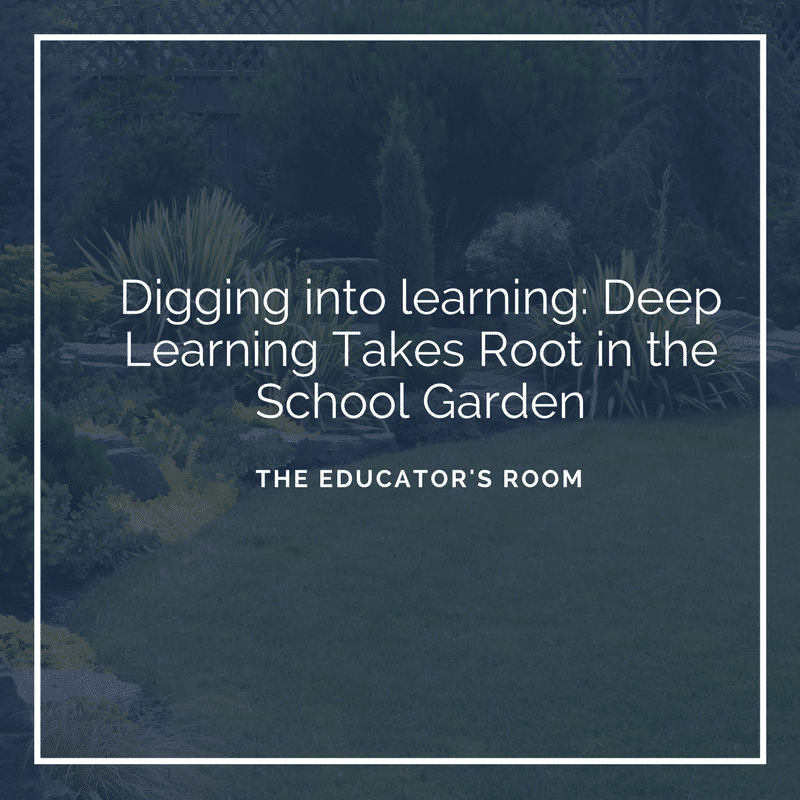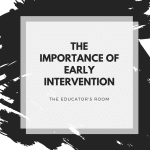“Peanut Butter! Peanut Butter!” squeals a spirited 3rd grader and instantly everyone stops, racing over to see what’s been found this time. You see, “peanut butter” is the code word students agreed upon to alert others when they find something cool. It can be a squirmy worm, a gorging caterpillar, an oddly shaped seed, or a bunny nest. The discoveries are endless and so is the enthusiasm. Where are they having so much fun? The school garden or as we like to call it, the outdoor classroom. Yes, they are having fun, but that is simply the tip of the iceberg. The deep learning that is taking root in each child is unquestionable as they dig into discovery, communication, and calculation.
Feeding Student Engagement
This is yet another example of the power of authenticity to transform school and ignite active learning. “To plant a garden is to believe in tomorrow.” True words were spoken by Audrey Hepburn, iconic actress and humanitarian. Children are eager to race outside to log plant growth, caterpillar size, or if a strawberry is ripe enough to pop into their mouths. They develop code words to scream out when they find a living creature to share with classmates. Whether it is begging for another tomato, cucumber, or piece of kale, nibbling on fresh mint and sage, huddling around the pan as Swiss Chard I sauteed then devoured, student engagement is unquestionable. Some of these students have never eaten these delicacies before. If we, the educators of today, share this often unknown world with our students we are believing in the power of tomorrow.
Building the Garden
You might be saying that sounds great but with budget cuts there is no money. Our school garden took root in 2012 with a hope, a vision, and a grant proposal. We received funding from Whole Kids Foundation. A flurry of behind the scenes work took place for nearly one year and we dug in with a whole school garden event the following Spring. This is definitely not something you can do alone. It took meetings with administration, the school grounds crew, maintenance and I learned what a well woven web a school really is. That intricate web extended beyond the school: a local landscape company helped with the layout based on the children’s ideas, a local organic farm donated plants and time as they came and taught each child how to plant, care for, and harvest the fruits and vegetables. But the heart of the garden was created by and is fostered by the children. Students brainstormed ideas for what they wanted their garden to look like; they researched what vegetables they wanted to grow; poured over butterfly information to figure out what flowers to plant in our butterfly garden. They calculated how many plants would fit in each bed and how many beds would fit within our outdoor space. The children water, weed, harvest, and of course eat the fruits of their labor. Teachers bring their classes out to make observations, write poetry, sketch, read, and explore. With the help of a supportive administration we have even been able to add a series of tables under a covered area for a true outdoor classroom. This year we added more fruit trees and a dry riverbed of painted stones created by the students. Where we go next is up to the children.
Harvesting the Profits
Even though children are on summer break, they still come back to care for the garden. Parents and children sign up to water and weed several times per week throughout the summer- their payment- harvesting whatever is ripe! It’s simple to set up and organize through Sign-Up Genius.
Here is an example of what we grow. This was an email I received from a parent and student, along with this photo:

“Swiss chard, hyper fresh zucchini and squash with blossoms, fresh string beans, peas from the pod, basil with EVOO, pecorino, and cracked pepper on top of homemade capellini.” Aside from the capellini (we have yet to grow wheat to make flour) that mouthwatering dish is the result of learning- and it is far from elementary! 4th grade student Ella Bree says, “It’s awesome to grow, pick it, then eat it! It involves school family and home family. All pesticide free!”
Letting it Take Root
The research on the value of school gardens is abundant. According to the Whole Kids Foundation, “Only 2% of children eat enough fresh fruits and vegetables, and the typical elementary student receives just 3.4 hours of nutrition education each year. School gardens can make a difference. Every seed planted sprouts a new opportunity for kids to learn about healthy choices and develop healthier eating habits.” So “lettuce” begin… and grow our hearts and minds along with some tomatoes and zucchini. It is this kind of learning that is at the root of authenticity. Botanist Liberty Hyde Bailey, Jr, said, “ A garden is a grand teacher. It teaches patience and watchfulness; it teaches industry and thrift; above all it teaches entire trust.” As educators, we must trust in the value of authentic learning opportunities, seek them out, embrace them and dig in.






